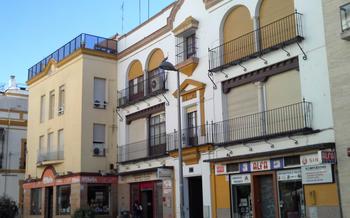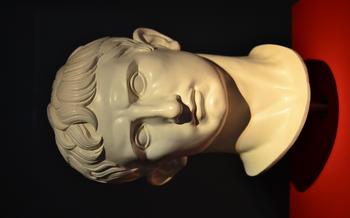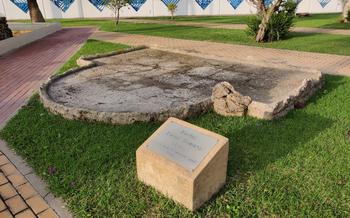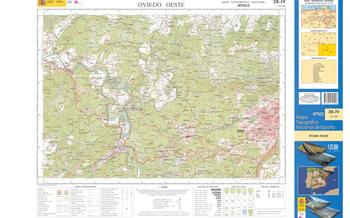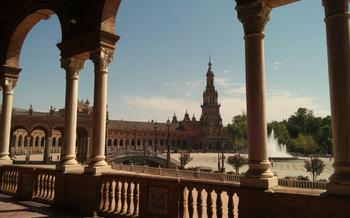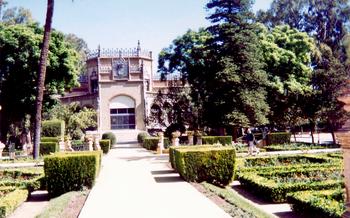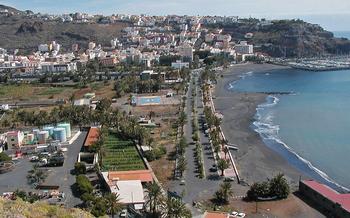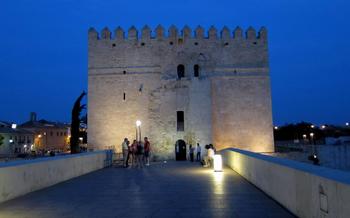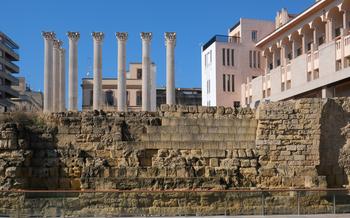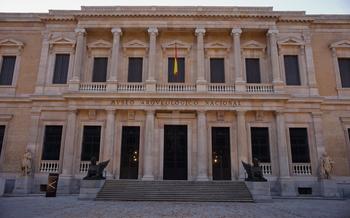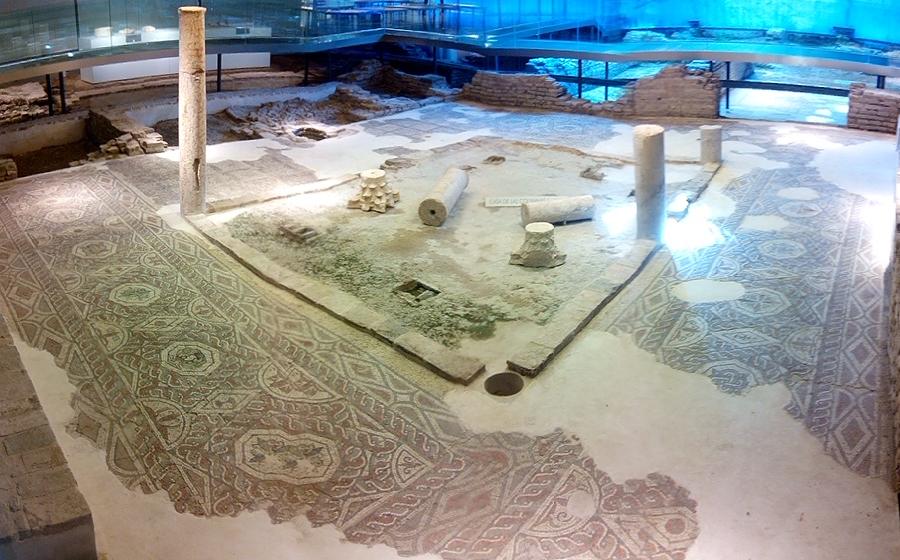
Antiquarium de Sevilla
- Antiquarium de Sevilla: A Journey Through Time
- The Roman City of Hispalis: A Glimpse into the Past
- The Collection: A Treasure Trove of Roman Artifacts
- The Mosaic Masterpieces: A Visual Feast
- The Sculptures: Gods, Goddesses, and Emperors
- The Pottery and Ceramics: Everyday Life in Hispalis
- Tools and Implements: A Window into Roman Craftsmanship
- Jewelry and Adornments: Expressions of Roman Elegance
- The Roman Baths: A Place of Relaxation and Socialization
- The Necropolis: A Journey into the Afterlife
- Interactive Exhibits and Educational Programs: Enhancing the Visitor Experience
- Temporary Exhibitions: Exploring New Discoveries
- Accessibility and Facilities: Ensuring a Welcoming Environment
- Guided Tours: Unveiling Hidden Stories
- Insider Tip: Unveiling the Hidden Gem
Antiquarium de Sevilla: A Journey Through Time
The Antiquarium de Sevilla is a captivating museum that takes visitors on a journey through the rich history of Roman Hispalis, the ancient Roman city that once stood on the site of modern-day Seville. Located in the heart of the city, the museum houses a fascinating collection of Roman artifacts, offering a glimpse into the daily lives, customs, and beliefs of the people who inhabited this ancient metropolis.
The Antiquarium de Sevilla is easily accessible by foot or public transportation. It is situated in the Plaza de la Encarnación, near the iconic Metropol Parasol, also known as Las Setas de Sevilla. The museum is open from Tuesday to Sunday, with extended hours on weekends. Admission fees are affordable, and guided tours are available in English and Spanish for a more immersive experience.
The Roman City of Hispalis: A Glimpse into the Past
The origins of Hispalis, the Roman city that preceded Seville, remain shrouded in mystery. Ancient sources suggest that it was founded by the mythical figure Hercules, adding a touch of legend to its history. Archaeological evidence, however, points to a more grounded reality, with the city's establishment likely occurring in the 3rd century BC by the Turdetani, an indigenous Iberian people.
Hispalis flourished under Roman rule, becoming a prominent city in the province of Baetica. Its strategic location on the banks of the Guadalquivir River and its fertile surroundings contributed to its growth and prosperity. The city served as an important trading hub, connecting the Roman Empire with the Atlantic coast and the mineral-rich regions of the Iberian Peninsula.
Significant archaeological discoveries have shed light on the grandeur of Roman Hispalis. Excavations have revealed the remains of impressive public buildings, such as the theater, the amphitheater, and the circus, hinting at the city's vibrant cultural life. Residential neighborhoods, adorned with intricate mosaics and opulent frescoes, showcase the luxurious lifestyle enjoyed by its inhabitants.
The Collection: A Treasure Trove of Roman Artifacts
The Antiquarium de Sevilla boasts a rich and diverse collection of artifacts that provide a glimpse into the daily lives of the ancient Romans who inhabited Hispalis. Among the highlights are stunning mosaics that once adorned the floors of opulent Roman villas. These intricate works of art depict mythological scenes, nature, and everyday life, offering insights into the artistic traditions and beliefs of the Roman era.
Equally captivating are the Roman sculptures that grace the museum's galleries. These impressive works of art depict gods, goddesses, and emperors, each imbued with unique symbolism and iconography. The sculptures showcase the artistic prowess of Roman artisans and provide a glimpse into the religious and political landscape of the Roman Empire.
In addition to these larger-scale artifacts, the Antiquarium also houses a remarkable collection of everyday objects that offer insights into the domestic life of the ancient Romans. Pottery and ceramic vessels, tools, and implements used in various crafts and industries, and exquisite jewelry and personal adornments provide a tangible connection to the daily lives of the people who once called Hispalis home.
The Mosaic Masterpieces: A Visual Feast
Among the many treasures housed within the Antiquarium de Sevilla, the mosaic floors stand out as exceptional works of art. These intricate and colorful mosaics, painstakingly crafted by Roman artisans, adorned the floors of wealthy villas and public buildings in Hispalis, adding a touch of opulence and luxury to everyday life.
The mosaicists employed a variety of techniques to create these stunning masterpieces. They used small, colored tesserae, or tiles, made from stone, glass, or ceramic, which were arranged to form intricate patterns, scenes, and figures. The tesserae were carefully cut and fitted together, creating a smooth and seamless surface that was both durable and visually appealing.
The subjects depicted in the mosaics are diverse and captivating. They include mythological scenes, such as the Labors of Hercules or the Judgment of Paris, as well as representations of nature, such as animals, plants, and landscapes. Some mosaics depict everyday scenes, such as hunting, fishing, or banqueting, offering a glimpse into the daily lives of the Roman inhabitants of Hispalis.
The mosaic floors in the Antiquarium de Sevilla are not merely decorative; they also hold significant historical and cultural value. They provide valuable insights into Roman art, mythology, and everyday life. By studying these mosaics, archaeologists and historians have been able to learn more about the beliefs, customs, and artistic traditions of the Roman people.
The Sculptures: Gods, Goddesses, and Emperors
The Antiquarium de Sevilla is home to an impressive collection of Roman sculptures, offering a glimpse into the religious beliefs, political power, and artistic traditions of ancient Hispalis. These sculptures, crafted from marble, limestone, and bronze, depict a pantheon of gods and goddesses, as well as emperors and other notable figures.
The sculptures of deities, such as Jupiter, Juno, and Minerva, reveal the religious devotion and mythology of the Roman people. These divine figures are often portrayed with their distinctive attributes, such as Jupiter's thunderbolt, Juno's scepter, and Minerva's owl. The sculptures capture the essence of these deities and their significance in Roman religious practices.
Among the most striking sculptures are those of Roman emperors and members of the imperial family. These statues served to glorify the rulers and reinforce their authority. The sculptures often depict emperors in heroic poses, clad in elaborate armor or togas, symbolizing their military prowess and political power. The attention to detail in these sculptures, from the intricate folds of the clothing to the finely rendered facial features, highlights the skill and artistry of Roman sculptors.
The sculptures in the Antiquarium de Sevilla provide a fascinating glimpse into the artistic styles and influences of the Roman Empire. While some sculptures adhere to the classical Greek tradition, with their idealized forms and harmonious proportions, others exhibit a more distinctly Roman style, characterized by a greater sense of realism and individuality. These sculptures offer valuable insights into the cultural exchange and artistic development that took place within the Roman Empire.
The Pottery and Ceramics: Everyday Life in Hispalis
The Antiquarium de Sevilla houses a remarkable collection of pottery and ceramics that provides a glimpse into the everyday life of the Roman inhabitants of Hispalis. These vessels, both functional and decorative, offer insights into Roman dining and household customs.
Displayed prominently are various types of pottery, from simple cooking pots and storage jars to elaborately decorated tableware. The functional forms of these vessels speak to the practical needs of Roman households, while the intricate designs and motifs reveal the artistic sensibilities of the potters.
One of the highlights of the collection is a set of tableware known as terra sigillata, which was highly prized by the Romans. These fine ceramic vessels were often adorned with intricate patterns and figures, and their glossy red finish added to their elegance.
The collection also includes a range of ceramic lamps, which provided lighting in Roman homes. These lamps come in various shapes and sizes, some featuring intricate designs and mythological motifs. They not only illuminated the interiors but also added a touch of artistry to the domestic spaces.
Overall, the pottery and ceramics on display at the Antiquarium de Sevilla offer a fascinating glimpse into the daily lives of the Roman people, shedding light on their culinary practices, household customs, and artistic preferences.
Tools and Implements: A Window into Roman Craftsmanship
The Antiquarium de Sevilla also houses a remarkable collection of tools and implements that provide a glimpse into the daily lives and craftsmanship of the ancient Romans. These artifacts, which were essential for various industries and trades, showcase the ingenuity and skill of Roman artisans. From simple farming tools to specialized instruments used in construction and manufacturing, the collection offers insights into the economic and technological achievements of Roman Hispalis.
Among the most intriguing artifacts are agricultural tools such as ploughshares, sickles, and hoes, which were used to cultivate crops and sustain the city's food supply. Carpentry tools like saws, hammers, and chisels reveal the techniques used to construct furniture, buildings, and other wooden structures. Metalworking tools, including anvils, tongs, and hammers, demonstrate the mastery of metalworking techniques, from forging weapons and armor to crafting intricate jewelry and household objects.
The collection also includes a variety of tools used in textile production, such as spindles, looms, and dyeing equipment. These artifacts shed light on the importance of the textile industry in Roman society, where clothing and fabrics were essential commodities. Tools related to leatherworking, pottery, and glassmaking further highlight the diverse range of industries that thrived in Roman Hispalis.
By examining these tools and implements, visitors can gain a deeper understanding of the Roman economy and the intricate network of crafts and trades that supported the city's growth and prosperity. The Antiquarium de Sevilla offers a unique opportunity to appreciate the ingenuity and skill of Roman artisans, whose contributions laid the foundation for many modern-day tools and techniques.
Jewelry and Adornments: Expressions of Roman Elegance
The Antiquarium de Sevilla boasts an impressive collection of jewelry and personal ornaments that provide a glimpse into the refined tastes and elegance of Roman society in Hispalis. From intricate necklaces and earrings to elaborate bracelets and rings, these artifacts showcase the skill and artistry of Roman craftsmen.
The jewelry on display ranges from simple, everyday pieces to opulent adornments reserved for special occasions. Necklaces made of gold, silver, and bronze feature intricate designs, often incorporating precious gemstones such as emeralds, rubies, and sapphires. Earrings, with their delicate filigree work and dangling pendants, add a touch of glamour to any ensemble.
Brooches, with their decorative clasps and colorful enamel work, served both a functional and ornamental purpose. They were used to fasten cloaks and tunics, while also adding a touch of personal style. Rings, often adorned with gemstones or engraved with initials or symbols, were popular among both men and women.
The jewelry collection at the Antiquarium de Sevilla offers a fascinating glimpse into the fashion and trends of Roman Hispalis. These exquisite pieces not only adorned the bodies of their wearers but also held symbolic and sentimental value, reflecting personal taste, social status, and cultural identity.
The Roman Baths: A Place of Relaxation and Socialization
The Antiquarium de Sevilla also houses the remains of a Roman bath complex, providing a glimpse into the bathing practices and social customs of ancient Hispalis. The baths, known as thermae, were an essential part of Roman life, serving as places for relaxation, socialization, and physical exercise. The ruins on display showcase the intricate architecture and design of these public bathing facilities.
Visitors can explore the various sections of the baths, including the frigidarium (cold room), tepidarium (warm room), and caldarium (hot room), each serving a specific purpose in the bathing ritual. The frigidarium features a large pool filled with cold water, where bathers would plunge to cool off after sweating in the hotter rooms. The tepidarium served as a transition zone with warm water, preparing the body for the intense heat of the caldarium. The caldarium was the hottest room, equipped with a furnace to heat the air and water, allowing bathers to sweat and cleanse their bodies.
The Roman baths were not just places for hygiene but also served as social gathering spots. Romans from all walks of life would frequent the baths to socialize, discuss business, or simply relax and unwind. The baths were also often adorned with sculptures, mosaics, and other artwork, creating a visually appealing environment for bathers to enjoy.
The Necropolis: A Journey into the Afterlife
The Antiquarium de Sevilla also houses a fascinating collection of artifacts related to Roman burial customs and traditions. The museum's necropolis section showcases archaeological remains from Roman cemeteries discovered in the city. Visitors can gain insights into the diverse burial practices of the Roman population of Hispalis.
Tombs, sarcophagi, and funerary inscriptions provide a glimpse into the beliefs and rituals associated with death and the afterlife in Roman society. The collection includes elaborate tombstones adorned with intricate carvings and inscriptions that reveal the names, titles, and life stories of the deceased. These artifacts offer a poignant reminder of the lives and legacies of the people who once inhabited Hispalis.
The necropolis section of the Antiquarium de Sevilla allows visitors to explore the Roman understanding of the afterlife and their beliefs about the journey into the underworld. Through these artifacts, we gain a deeper appreciation of the cultural and religious practices that shaped Roman society in Hispalis.
Interactive Exhibits and Educational Programs: Enhancing the Visitor Experience
The Antiquarium de Sevilla offers a range of interactive exhibits and educational programs to enhance the visitor experience and make Roman history more accessible and engaging. These exhibits utilize technology to bring the past to life, allowing visitors to explore Roman artifacts in new and exciting ways.
Touchscreens and multimedia displays provide in-depth information about the artifacts, their historical context, and their significance. Visitors can virtually walk through the streets of ancient Hispalis, explore the Roman baths, and even handle virtual replicas of artifacts. These interactive elements make the museum a particularly attractive destination for younger audiences, helping them to connect with Roman history in a fun and interactive way.
In addition to the permanent interactive exhibits, the Antiquarium also hosts educational programs and workshops throughout the year. These programs are designed to provide a deeper understanding of Roman culture and archaeology, and may include lectures by experts, guided tours tailored to specific themes, and hands-on activities for children. These programs offer a unique opportunity to learn more about the Roman world and engage with the museum's collection in a meaningful way.
Temporary Exhibitions: Exploring New Discoveries
The Antiquarium de Sevilla also hosts temporary exhibitions that showcase new archaeological discoveries and explore specific themes related to Roman Hispalis. These exhibitions often feature artifacts that have never been seen before by the public, providing a unique opportunity to learn more about the city's rich past. The museum collaborates with other institutions and universities to bring these exhibitions to life, ensuring a diverse range of topics and perspectives.
Temporary exhibitions at the Antiquarium have covered a wide range of subjects, from the everyday life of Roman citizens to the religious practices of the ancient city. Past exhibitions have showcased artifacts such as jewelry, pottery, and sculptures, as well as interactive displays and multimedia presentations. These exhibitions offer a dynamic and engaging way to learn more about Roman Hispalis and its enduring legacy.
Accessibility and Facilities: Ensuring a Welcoming Environment
The Antiquarium de Sevilla is committed to creating an inclusive and welcoming environment for all visitors. Accessibility features, such as ramps, elevators, and audio guides, allow visitors with disabilities to navigate the museum with ease. The museum also provides restrooms, cloakrooms, and a gift shop for added convenience.
For a more comfortable and enriching experience, visitors can take advantage of the available facilities. Audio guides in multiple languages offer detailed information about the exhibits, enhancing the visitor's understanding and appreciation of the artifacts. The gift shop provides a range of souvenirs, including replicas of Roman artifacts, books on Roman history, and postcards featuring the museum's highlights.
Guided Tours: Unveiling Hidden Stories
To truly delve into the depths of the Antiquarium de Sevilla's treasures, consider embarking on a guided tour. Conducted in various languages, these tours offer an unparalleled opportunity to unlock the hidden stories behind the artifacts and gain insights from knowledgeable experts. With a guide by your side, you'll unravel the significance of each mosaic, sculpture, and pottery, delving into their historical context and symbolism.
Guided tours provide a comprehensive overview of the museum's collection, allowing you to appreciate the evolution of Roman Hispalis and its inhabitants. Through captivating narratives, your guide will bring the ancient city to life, shedding light on the daily lives, beliefs, and cultural practices of its Roman residents.
Whether you're an avid history buff or simply seeking a deeper understanding of Roman culture, a guided tour of the Antiquarium de Sevilla is an enriching experience that will leave you captivated and inspired.
Insider Tip: Unveiling the Hidden Gem
Beyond the main exhibits, the Antiquarium de Sevilla holds secrets waiting to be discovered. Venture off the beaten path and explore the lesser-known corners of the museum to uncover hidden passageways and concealed rooms. Keep an eye out for unique artifacts not displayed in the primary exhibits, offering a glimpse into the museum's lesser-known treasures. This exploration will reward you with a deeper appreciation for the richness and diversity of the Antiquarium's collection.
